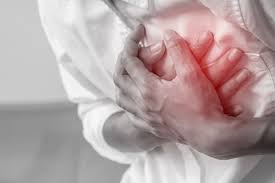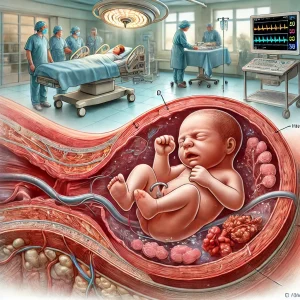Danger Signs in Pregnancy: Recognizing Symptoms that Require Immediate Medical Attention
Pregnancy can be a beautiful and special time for both the expectant mother and her family. However, it can also be a time of anxiety and worry, as potential danger signs should not be ignored. Knowing what to look out for in terms of warning signals is essential for maintaining the health of both mother and baby during this important period. Common danger signs in pregnancy will be discussed below. Please keep reading for details on the following topics:
Examples of danger signs
Causes of danger signs in pregnancy
How to act when danger signs are observed
DANGER SIGNS
Cramping sensation to the abdomen
Abdominal tightening during the 20th to 37th week of pregnancy
Leaking of fluid from the vagina
Heavy vaginal bleeding
Vomiting and nauseousness
Elevated temperature over 100 degrees Fahrenheit and 38 degrees Celsius
Pain to the head and visual problems
Decrease or abnormal fetal movement
Abrupt increase in weight and selling to the joints
Pain and burning when urination
Abnormal discharge from the vagina

Here are key warning signs that require immediate medical attention:
1. Severe Abdominal Pain or Cramping
-
Possible Causes:
-
Miscarriage (in early pregnancy).
-
Placental abruption (separation of the placenta from the uterus).
-
Ectopic pregnancy (if early in pregnancy).
-
2. Heavy Bleeding
-
Possible Causes:
-
Placenta previa (when the placenta covers the cervix).
-
Placental abruption.
-
Miscarriage or ectopic pregnancy.
-
Labor (if nearing term).
-
3. Severe Headaches
-
Possible Causes:
-
Preeclampsia (a serious condition causing high blood pressure).
-
4. Blurred Vision or Sudden Changes in Vision
-
Possible Causes:
-
Preeclampsia.
-
High blood pressure.
-
5. Swelling of Hands, Face, or Legs
-
Possible Causes:
-
Normal pregnancy swelling (mild and gradual swelling).
-
Preeclampsia (if sudden or severe swelling occurs).
-
6. Decreased or Absent Fetal Movements
-
Possible Causes:
-
Fetal distress.
-
Placental issues.
-
Intrauterine growth restriction (IUGR).
-
7. Severe Vomiting (Hyperemesis Gravidarum)
-
Possible Causes:
-
Hyperemesis gravidarum (severe and persistent vomiting).
8. High Fever (Above 38°C or 100.4°F)
-
Possible Causes:
-
Infections such as urinary tract infections (UTIs).
-
Listeriosis, influenza, or other bacterial/viral infections.
-
9. Sudden and Severe Back Pain
-
Possible Causes:
-
Preterm labor.
-
Urinary tract infection.
-
10. Leaking Fluid from the Vagina
-
Possible Causes:
-
Premature rupture of membranes (PROM).
-
Preterm labor (if before 37 weeks).
-
Amniotic fluid leakage.
-
11. Painful or Burning Urination
-
Possible Causes:
-
Urinary tract infection (UTI).
-
Kidney infection.
-
12. Difficulty Breathing or Chest Pain
-
Possible Causes:
-
Preeclampsia.
-
Pulmonary embolism (blood clot in the lungs).
-
13. Contractions Before 37 Weeks (Preterm Labor)
-
Possible Signs:
-
Regular tightening or cramping of the uterus.
-
Pelvic pressure or lower backache.
-
14. Unusual Vaginal Discharge
-
Possible Causes:
-
Infection (e.g., bacterial vaginosis, sexually transmitted infections).
-
Amniotic fluid leakage.
-
15. Dizziness, Fainting, or Weakness
-
Possible Causes:
-
Hypotension (low blood pressure).
-
Blood loss or dehydration.
CAUSES OF DANGER SIGNS IN PREGNANCY
Infection of the urinary tract
The fertilized egg is implanted outside the uterus
Severe abdominal pain to one side of the abdomen, radiating to the shoulder, fainting, weakness, dizziness, nausea, or vomiting, severe vaginal bleeding

The loss of a pregnancy before the 24th week
Abdominal Cramping, vaginal bleeding, loss of amniotic fluid
Constant nausea and vomiting in the pregnancy.

The initiation of labor between the 24th and 37th week of a pregnancy
Contractions, Pelvic pressure, pain to the back and abdomen cramping, which is not relieved by rest, drinking fluids or laying down
Infection
Infection is a major health concern in our world today. It can spread quickly and affect individuals of all ages, genders, and backgrounds. It is important to be aware of the different types of infections, the potential risks associated with them, and the ways to reduce the risk of infection. Knowing how to recognize the signs of infection, how to prevent it, and how to treat it can help to keep yourself and others safe.
Temperature equal to or higher than 100.5°F(38.1°C)
Fetal Distress

Fetal distress is a condition during pregnancy where the unborn baby is not getting enough oxygen or is otherwise not healthy. This can be due to a number of different issues, such as problems with the umbilical cord, maternal health issues, or infection. It is important to be aware of the signs and symptoms of fetal distress and to talk to your doctor or midwife if you have any concerns. Early detection and treatment can be critical in ensuring the health of the baby.
Summary
When baby demonstrates abnormal movements such as no movement or excess movement
The mother feels less than 10 kicks throughout the day
Elevated blood pressure readings accompanied by the presence protein in the urine
Intense headaches
Swollen limbs
Visual problems
The placenta is implanted over or close to the cervix
Sudden loss of blood from the vagina, same painless and bright red
The premature separation of the placenta from the uterine wall
Abrupt and constant abdominal pain and vaginal bleeding

WHAT TO DO WHEN DANGER SIGNS ARE OBSERVED DURING PREGNANCY
It is important to know when to seek urgent medical care, as delaying appropriate treatment can lead to further health complications. If you experience any of the following symptoms, you should seek medical help immediately. If you have any doubts about whether you should seek medical care, it is always better to err on the side of caution and consult with your doctor.
Seek urgent medical care
Early diagnosis and treatment are key to ensuring that both you and your unborn child stay healthy throughout the pregnancy. Always keep your healthcare provider’s contact information readily available.
Disclaimer: The information provided in this content is for general informational purposes only. It is not intended as medical or healthcare advice, diagnosis, or treatment. Always seek the advice of a qualified healthcare professional with any questions you may have regarding a medical condition or healthcare decisions.

